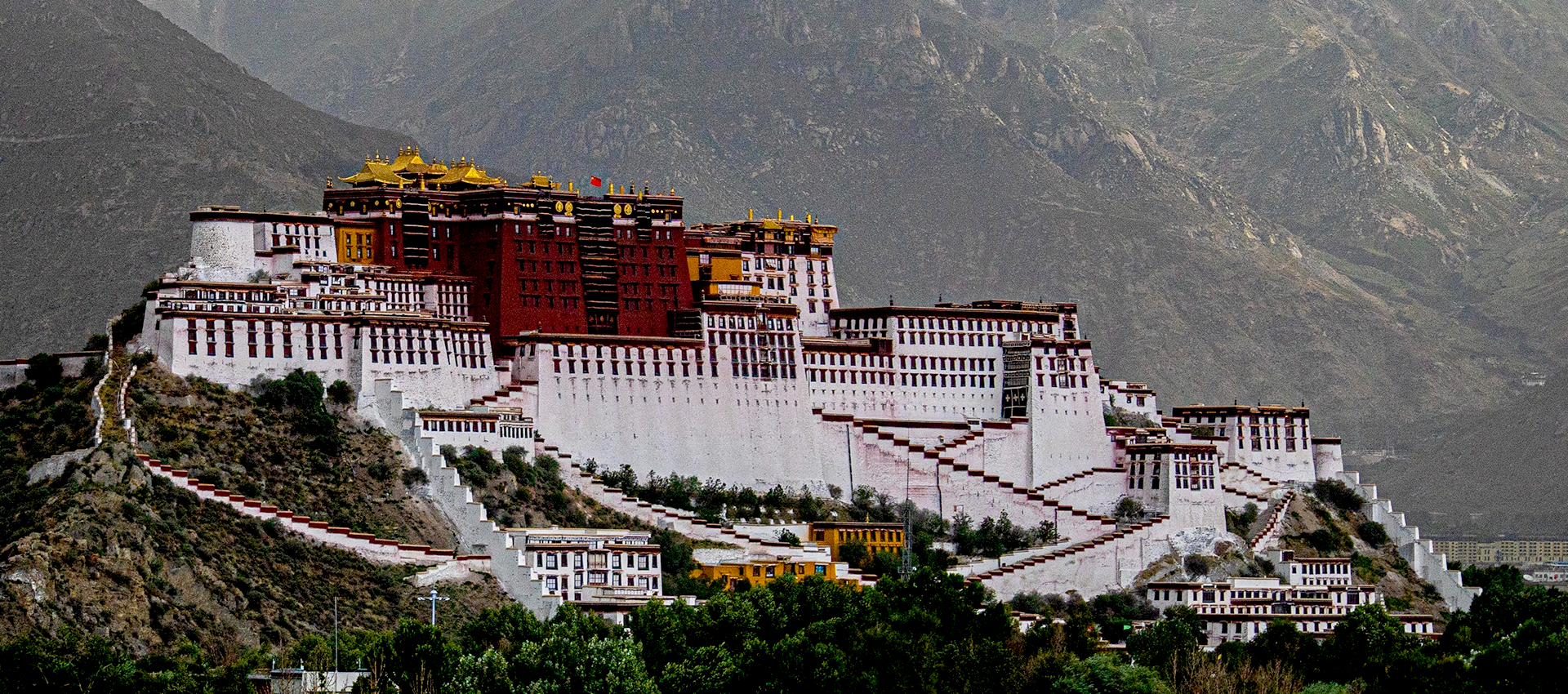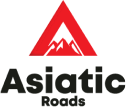
GANDEN MONASTERY TO SAMYE MONASTERY
TREKKING IN TIBET
- Home /
- Tibet /
- Tibet Trekking & Hiking /
- GANDEN MONASTERY TO SAMYE MONASTERY
Trekking in Tibet offers you an altogether different experience. As you hike along the rugged Tibetan terrain, you will be greeted with sights so different and new: from the arid Tibetan topography that resembles a lunar landscape to the ancient villages with their colorful prayer flags and magnificent monasteries. As you traverse along the 80km trekking trail that skirts barley fields and nomadic pastureland, you get an opportunity to observe Tibetan lifestyle at close quarters and experience the real Tibet. Before your trek commences, you will be taken on a sightseeing tour to Lhasa.
During the trek you will be supported by an expert and dedicated trekking crew. With them you cross two high passes in the Tsotup Chu Valley, Shug La (5250m) and Chitu La (5100m). You will also get to explore the many monasteries that lie along the trekking trail. The chief highlight of this trek is the trekking trail which connects the two important monasteries of Tibetan Buddhism, Ganden and Samye. Ganden Monastery, which lies 45 km east of Lhasa, is the first monastery of the Gelugpa sect. Built by Tsongkhapa, the founder of the Gelugpa order, the monastery is renowned as one of the biggest and most important Gelugpa monasteries in Tibet. The Samye monastery with its gleaming facade is reached by crossing the Tsangpo River. Founded in 779 AD by Trisong Detsen, the monastery has a collection of pagodas and temples.
Excursions to the Tandruk Monastery (which holds wonderful specimen of Tibetan art) and the Yambulakang castle (the home of the Yarlung Kings) are also included in your itinerary.
Itinerary In Detail
-
Day 01: Arrive in Kathmandu (1,400 m / 4,592 ft.)
Arrive at Kathmandu. Upon arrival, meet & greet at the airport and transfer to hotel for room check in. Rest of the day is free for rest.
Dinner and overnight at hotel.
-
Day 02: Sightseeing tour of Kathmandu, Swyambhunath and Patan City.
After breakfast proceeds for a sightseeing tour Swayambhunath Stupa situated atop a hill from where you could get a bird’s eye view of Kathmandu Valley. The Swayambhunath Stupa is also known as the “Monkey Temple”!! and listed in a world heritage site.
Later proceed for sightseeing tour of Kathmandu city. It includes visit to the Hanuman Dhoka (Kathmandu Durbar Square) – an ancient durbar (palace) with its numerous old palaces, temples and pagodas, the Temple of Living Goddess “Kumari”, and the Kasthamandap Temple, which is believed to be constructed from the wood of a single tree from which Kathmandu derives its name.
Lunch on your own in Kathmandu Durbar Square. After lunch proceed for a sightseeing tour of the ancient Patan City, this ancient city of Patan also known as Lalitpur or the city of fine arts is about five Kilometers southeast of Kathmandu. The city is full of Hindu temples and Buddhist monuments.
Dinner and overnight at hotel.
-
Day 03: Visit Pashupatinath, Bouddhanath and Bhaktapur City.
After breakfast proceed for a tour of Bouddhanath Stupa – an ancient colossal stupa and the center of Tibetan Buddhism in the world which is also listed in UNISCO world heritage site.
After the tour of Bouddhanath, proceed for a tour of Pashupatinath Temple – the Temple of Lord Shiva situated on the bank of the holy Bagmati River. The temple is listed on a UNISCO World Heritage Site.
Later drive to Bhaktapur City, literally the “City of Devotees”, is renowned for its elegant art, fabulous culture, colorful festivals, traditional dances and the typical Newari lifestyle. Here explore the Royal Palace, the Golden Gate, the entrance to the Palace of 55 Windows, known as the most significant piece of art in Nepal. Then visit the highest temple in the entire Kathmandu Valley- the Nyatapola Temple. This is also listed on a UNISCO world heritage site. After sightseeing tour transfer back to hotel.
Overnight at hotel.
Note: On day 02 & day 03, we will process your Chinese Visa at Chinese Embassy in Kathmandu.
-
Day 04: Obtain Chinese Visa and fly to Lhasa (3,660m / 12,004ft)
Morning transfer to the airport for the hour-long flight to Lhasa. The Spectacular flight on Air China which. Crosses the main Himalayan range and the mountain views are magnificent. After arriving at Gonggar Airport in Tibet, It’s an hour drive to Lhasa. It’s advisable to rest and take an easy for the remainder of the day, due to Lhasa’s altitude.
Overnight at hotel.
-
Day 05: Sightseeing tour of Potala Palace, Jokhang Temple and Barkhor Bazaar.
Am: Potala Palace.This morning we will visit the Potala Palace, which dominates the city of Lhasa. A spectacular building, it contains the private quarters of the Dalai Lama as well as numerous grand staterooms and many important chapels. There has been a palace on this site since the 5th or 6th century, but the present palace was constructed in the 17th century. A visit to the Drepung Monastery this afternoon will complete a truly awe- inspiring day. Founded in the 14th century, this monastery was once the largest in the world with a population of around 10,000 monks. These days that figure is down to several hundred, but there is still much here of interest as it was left relatively unscathed during the Cultural Revolution.
Jokhang Temple: Situated in the heart of old Lhasa houses Tibet’s most precious religious relic, a golden Sakyamuni Buddha that was brought as a gift by the Chinese princess Wen Cheng on her wedding to the Tibetan King, Songtsen Gampo. Devout pilgrims prostrate themselves at the entrance of the temple and make the inner holy circuit to offer yak butter to the gods and pay homage to the golden statue of Sakyamuni. Surrounding the Jokhang Temple is the busy bustling Barkhor Bazaar. A marketplace, which is the religious and social focus of Lhasa. This is the Spiritual Center of Tibet and is also the heart of Lhasa.
Barkhor Bazaar:
Barkhor, a circular street at the center of Old Lhasa, is the oldest street in a very traditional city in Tibet. It is a place where Tibetan culture, economy, religion and arts assemble and a place to which a visit must be paid.
It has been said that in the seventh century Songtsen Gampo, the first Tibetan King (617 – 650) who unified Tibet, married Chinese Princess Wencheng and Nepal princess Tritsun. Later Princess Tritsun built Jokhang Temple to accommodate the twelve-year-old Jowo Sakyamuni, brought to Tibet by Princess Wencheng.
Barkhor is the road, where pilgrims tramped out around Jokhang Temple through centuries. Buddhist pilgrims walk or progress by body-lengths along the street clockwise every day into deep night. Most of Lhasa’s floating population is comprised of these pilgrims. The pilgrims walk outside four columns on which colorful scripture streamers are hung, a custom, which began in the Tubo period (633-877) as a way to show respect.
Overnight at hotel.
-
Day 06: Sightseeing tour of Sera Monastery & Norbulingkha.
Am: Visit the SERA Monastery: 5 Km (3 miles) north of Lhasa. Sera’s setting is one of the prettiest Once a community of more than 5,000 monks, it was virtually extinguished by the Chinese invasion. The restored monastery sits below the brow of the hill on which Tsongkhapa built a hermitage and spent several years in meditation. One of the monk’s disciples started building the Sera in 1419 AD”. 2nd floor was Chinese and the 3rd floor Indian.
PM: Visit the Norbulingkha: The ‘Jewel Park’ as it is known in Tibetan, was built in the 18th century and served as the Summer Palace of the Dalai Lamas. This colorful garden landscape was the site of picnic and public gatherings. The place is richly decorated, creating an atmosphere of peaceful repose.
Dinner and overnight at hotel in Lhasa.
-
Day 07: Drive to Ganden Monastery (4,180m / 13,710 ft.) - 45 kms
After breakfast drive along the south bank of the Kyi Chu to Medro Gongkar, towards Ganden Monastery. The Monastery lies 45 km (28 miles) east of Lhasa. Lying on the mountainside, it looks magnificent and grand. Tsong Khapa, the founder of Gelugpa, established it in 1409 AD. Ganden Monastery is the first Gelugpa monastery in Tibet. Ganden has stupendous view of the Kyi-chu Valley and fascinating kora. The mountains round Ganden provide you a good warming up before the trek. At the south-west corner of Ganden is a large rock draped with prayer flags.
Dinner and overnight at Camp.
-
Day 08: Trek to Yamdo (4,250m / 13,940 ft.)
After breakfast start trek away from Ganden towards south along the Angor Ri. After ascending for 1 & ½ hours, you see several cairns near a saddle. The trail further leads westwards descending to Hepu village. Here several houses become visible. 3 ½ hours of trekking brings you close to Shug La pass. Ani Panong lies 1 hour away from Hepu. An hour of continuous ascent leads to lush meadows and soon appears Yama Do.
Dinner and overnight at Camp.
-
Day 09: Trek to Tsotup Chu valley via Shung la (5,250m / 17,220 ft.)
After breakfast at camp leave Yama Dao and climb eastwards negotiating boulders along the final climb atop 5250 meters of the Shug La, the highest point on this trail. The pass is distinctively marked with its large cairn wrapped in prayer flags and yak horns. After a brief stop at the pass to savor the grand vistas you make a sharp descent walking past a boulder field. The trail eventually opens into the valley. Up ahead in a distance the trail crosses the Tsotup Chu, a large stream with rich pastures of yaks, goats and sheep. You encounter several herders on the way. After trekking for 4-5 hours, you reach the Tsotup Chu Valley.
Dinner and overnight at Camp.
-
Day 10: Trek to Herder’s Camp.
After breakfast at camp turn away from Tsotup Chu valley, you come across main water course following from the south-east and a tributary from the south-west. You take the route along this tributary followed by steep ascents for 30 minutes to a large basin and thereafter, the tributary disappears out of sight. The trail further opens into the valley progressing south to the Chitu La at 5100 meters capped with several cairns. The trail further brushes past a sheer rock wall on its south flank. Thereafter, follows a descent into a basin showcasing three turquoise lakes. Further on, the trail moves on to the west side of the stream and thereon, after 30 minutes approaches campsite. Many herders’ camps can be seen at the nearby locations. Following the rock-strewn valley floor, you will head to a flat seasonal herder’s camp in the east side of the valley. Soon after returning to the west side of the valley, you will near another seasonal herders’ camp.
Dinner and overnight at Camp.
-
Day 11: Trek to Wango
Traversing through the lush scrub forest along the wide trail, you trek ahead, taking in the refreshing sights of verdant vegetation. The trail is dotted with fragrant junipers growing on southern slopes and rhododendron on the shadier slopes. Further ahead the village of Changtang comes into view, where the majority of the local villagers are engaged in animal husbandry. Yarlung Tsangpo valley can be viewed on the south.
You can ascend steeply up to Yamalung Hermitage for one hour. But if you choose not to climb this ascent, you can simply wait near the bridge. Ancient history has it that Guru Rin Poche, after rigorous meditation attained spiritual enlightenment with the blessings from the deity of Amitayus (Tibetan: Tsepame) at Yamalung (also called Emalung). This hermitage houses small temples which shelters monks, sacred springs and stone carvings of 8th Guru Rin Poche, King Trisong Detsen and Indian pundit Shantarakshita. Stone houses come into sight after walking for one hour to the village of Nyango. The trail overlooks the tributary streams cascading from the north-west to join the Samye valley. The old trade route from Lhasa to Samye via the Gokar La follows this valley. The trail further proceeds towards Wango. You further head towards Pisha.
Dinner and overnight at Camp.
-
Day 12: Trek to Samye & drive to Tsedang.
Pisha offers picturesque view of the lower Samye valley. At its lower end an undulating hill called Hepo Ri appears into picture. This is regarded very sacred. The trail winds through the ridge of Dragmar towards verdant fields and villages of Samye reviving ancient history. A partially rebuilt palace is nestled on the summit. History boasts that the palace is the birthplace of King Trisong Detsen and had a grand temple in the ancient time. Further off the road, you will find a small red and white temple which is believed to have been built under the shade of white sandalwood tree and nourished by the buried placenta of King Trisong in the ancient time but was chopped off during Cultural Revolution. Further on, the trail overlooking amazing spires leads to Sangbu village. You will find a well-trodden track to Samye.
Dinner and overnight at hotel in Tsedang.
-
Day 13: Fly to Kathmandu.
Early wakeup and transfer to Gonggar Airport to fly back to Kathmandu. Upon arrival meet, assist and transfer to hotel for much refreshment and rest.
Eve: Farewell dinner
Overnight at Hotel.
-
Day 14: Final departure from Kathmandu.
09 Nights / 10 Days From

Any Question?
Feel free to call our travel experts.
+977 9851189018, +977 9801089018
info@asiaticroads.com
Whats Include and Exclude
Services Inclued
In Nepal
- All arrival, departure transfers & sightseeing tours by deluxe A/C tourist vehicle in accompanied by Himalayan Holidays English speaking Guide / representative.
- 3 Nights stay at hotel as above on Bed & breakfast basis inclusive of all applicable taxes.
- Welcome and farewell dinner.
In Tibet
- Tibet travel permit issued by China Tibet Tourism Administration (CTTA)
- Airfare for sector Kathmandu / Lhasa / Kathmandu on economy class.
- Tibet visa fees.
- All sightseeing tour, drive and transfer in Tibet by Toyota 4WD land cruiser.
- 2 nights stay at hotel as above in Lhasa on BB basis inclusive of all taxes.
- 1 night stay at Tsedang Hotel in Tsedang on full board basis.
- 6 nights / 4 days fully organized Ganden Monastery to Samye Monastery trek in Tibet inclusive of accommodation on tent, all meals prepared by Tibetan cook and kitchen staff, Yak & Yak man to carry load, services of English speaking guide and kitchen staff.
Services not Inclued
- International airfare except Kathmandu / Lhasa / Kathmandu.
- Nepal entry and re-entry visa fees.
- Meals except welcome and farewell dinner in Nepal while staying at hotel in Kathmandu and Lhasa.
- Items of a personal nature such as bar bills, aerated drinks, mineral water, laundry, telephone calls, personal gratuities as tips to guides, drivers, hotel bell hops, etc.
- Personal insurance against loss of a valuables, theft, illness, hospitalization, medications etc.
09 Nights / 10 Days From

Any Question?
Feel free to call our travel experts.
+977 9851189018, +977 9801089018
info@asiaticroads.com
Additional Information
-
Clothing & Equipments
WHAT TO WEAR:
Light clothing is only for short treks up to seven days at altitudes up to 6000ft (1830m) during fall (autumn) from September to November and in spring between March to May. The other months at all altitudes will be cold and at most times the temperatures will be below zero.
Footwear:
You will need hiking boots with ankle support, sneakers for flat trails, and flip-flops or chappals for use around the camp/lodge.
Clothes:
Shirts, T-shirts (4), blouse, etc., for daywear and a woolen shirt/T-shirts for evenings.
MEN:
Shorts, cotton trousers, jeans, sweatpants (recon-mended), etc.
Undergarments & Socks:
Thermal underwear and inner trousers for the above 7,000 ft. treks. Thick trek socks.
Warm Clothes:
A light sweater, a windcheater or light lined/padded jacket, and a down jacket or parka for above 7000 ft. treks. Woolen thick cap and warm gloves.
Sun / Rain:
Rain gear or umbrella and a sun hat are essential. Global warming has led to freak weather conditions and it has become more and more difficult to predict weather conditions.
Note: Umbrellas are cheap and easily available in Kathmandu.
HOW TO PACK
In The Day Pack: In the Duffel Bag: Sunglasses Towels Moisturizing/Sunscreen lotion Spare batteries Prescribed medicines Toiletries Flashlight washing soap Camera and spare film Spare clothes all wrapped in plastic bags Binoculars-optional Reading Reference book/Notebook Pencil/Pen / Water bottles/ Trek permits Toilet paper Umbrella/rain gear / Sweater Note: Sleeping bags can be purchased in Kathmandu. It is even available on hire upon request. However, we request our clients to bring their own sleeping bags because of hygiene.
09 Nights / 10 Days From

Any Question?
Feel free to call our travel experts.
+977 9851189018, +977 9801089018
info@asiaticroads.com
Reviews
In my 2 week stay, John was very professional and took me around to experience all that Kathmandu and surrounding areas has to offer. Sites were seen and many locals were met through John’s network.

Steven Stone
TravellerIn my 2 week stay, John was very professional and took me around to experience all that Kathmandu and surrounding areas has to offer. Sites were seen and many locals were met through John’s network.

Steven Stone
Traveller09 Nights / 10 Days From




